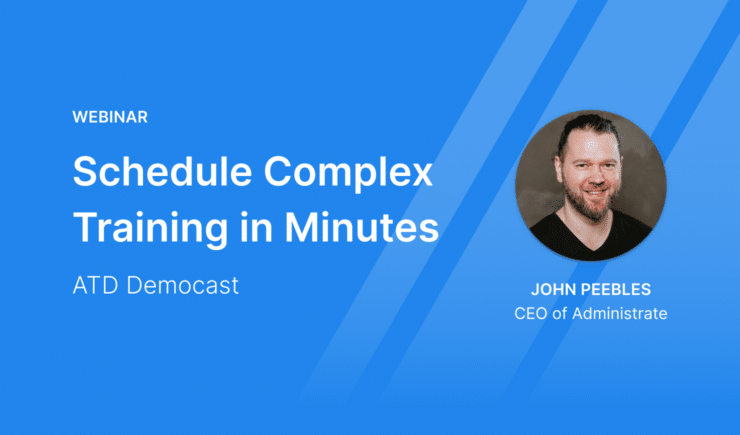When you’re responsible for training customers on million-dollar MRI machines across dozens of countries, each with different regulatory requirements, the phrase “training operations” takes on a whole new meaning. For Siemens Healthineers, the challenge wasn’t just about delivering quality education—it was about doing so consistently, efficiently, and at a scale that would make most CLOs lose sleep.
Their solution? A bold move toward ILT automation that transformed their entire enterprise training operations and achieved something remarkable: 90% automation of their training processes.
The Problem: Global Chaos Hiding Behind Local Excellence
Siemens Healthineers had a problem that many global organizations face, but few want to admit. On paper, everything looked fine. Each country training center operated independently, delivering excellent technical training on advanced medical equipment. Local teams understood their markets, their regulatory environments, and their customers’ needs.
But zoom out to the enterprise level, and the picture became considerably messier.
Without a centralized training management system, the organization faced fragmentation at every level. Each country maintained its own processes, its own scheduling systems, its own way of tracking learner progress. This decentralization meant that simple questions—How many customers did we train last quarter? What’s our global training capacity? Where are our bottlenecks?—had no easy answers.
More critically, this fragmentation was killing L&D efficiency. Training coordinators spent countless hours on administrative tasks: manually scheduling sessions, sending confirmation emails, tracking attendance, generating certificates, and reconciling billing. These weren’t value-added activities. They were necessary evils that consumed time better spent on instructional design and customer relationships.
For a CLO looking at training ROI, the math was troubling. High operational costs, limited visibility into performance metrics, and no clear path to scale without proportionally increasing headcount.
The Turning Point: Standardization Without Suffocation
Here’s where Siemens Healthineers made a decision that separates successful digital transformations from failed ones: they chose to standardize infrastructure without standardizing content.
The goal wasn’t to strip away local autonomy—that would be both foolish and dangerous in heavily regulated healthcare training. German medical device training has different requirements than training in Japan or Brazil. Local expertise matters.
Instead, they needed enterprise training operations that provided a consistent backbone while preserving flexibility at the edges. One training management system that could handle the complexity of global operations while respecting local requirements.
This is the paradox every global CLO faces: How do you create consistency without creating rigidity?
The Transformation: When Automation Meets Reality
The implementation of ILT automation across Siemens Healthineers’ training operations wasn’t just a technology deployment—it was a reimagining of how training administration could work.
The new training management system automated the workflows that had previously consumed administrative bandwidth:
Registration and scheduling became self-service. Customers could browse available courses, check real-time availability, and register themselves. No more email chains. No more phone tag with training coordinators.
Communication workflows triggered automatically. Confirmation emails, pre-training instructions, reminder notifications, and post-training surveys all happened without human intervention.
Resource management became dynamic. Instructors, classrooms, and equipment could be scheduled and tracked centrally, eliminating double-bookings and maximizing utilization.
Compliance and documentation streamlined dramatically. Attendance tracking, certificate generation, and training records all flowed automatically into a centralized system, creating an audit trail that satisfied both internal quality standards and external regulatory requirements.
The result? That 90% automation figure that initially sounds too good to be true.
The ROI Story: What Automation Actually Buys You
Let’s be critical here: automation for automation’s sake is worthless. The question every CLO should ask is: What does this actually buy us?
For Siemens Healthineers, the answer came in three forms:
Operational capacity: Training coordinators who previously spent 80% of their time on administrative tasks could now focus on strategic work—improving course design, analyzing training effectiveness, building customer relationships. The same team could now support significantly higher training volumes without burning out.
Strategic visibility: For the first time, leadership had real-time visibility into global training operations. Which courses were most in demand? Where were capacity constraints? What was the true cost per learner? These insights enabled smarter resource allocation and strategic planning.
Customer experience: Perhaps most importantly, the customer experience improved dramatically. Faster registration, clearer communication, more reliable scheduling, and immediate access to training records created a professional, frictionless experience that reflected the sophistication of the medical equipment being taught.
This is what training ROI looks like when you get it right—not just cost savings, but strategic capability.
Lessons for CLOs: The Hard Truths About Scale
If you’re a CLO looking at this case study and thinking about your own organization, here are the uncomfortable truths worth acknowledging:
Manual processes don’t scale. You can hire your way to slightly better efficiency, but you can’t hire your way to transformation. At some point, administrative overhead becomes a strategic constraint.
Local autonomy and global consistency aren’t opposites. The right training management system enables both. The wrong approach forces you to choose.
Your training coordinators are too valuable for busy work. If your team’s expertise is being consumed by scheduling and email management, you’re wasting your most valuable resource—human judgment and creativity.
Visibility is a competitive advantage. In an era where every function is asked to prove its value, the inability to answer basic questions about training operations is a career-limiting problem for learning leaders.
The Path Forward
Siemens Healthineers’ journey from fragmented local operations to 90% automated enterprise training operations didn’t happen overnight. It required vision, investment, and the courage to challenge the status quo.
But the blueprint is clear: centralize infrastructure, preserve local flexibility, automate ruthlessly, and measure obsessively.
For CLOs navigating similar challenges—whether in healthcare, manufacturing, technology, or financial services—the question isn’t whether to automate. It’s how quickly you can move before your competitors do.





